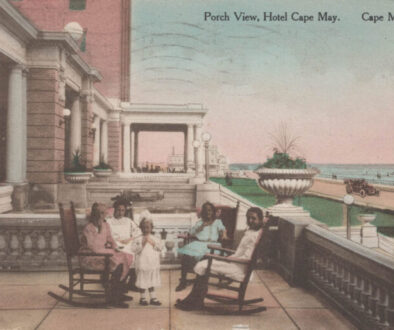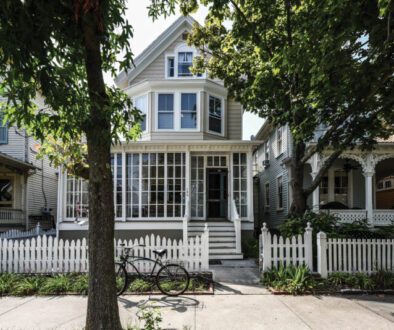Beach Reads
Every house has a story of what it has withstood, but what if the walls of historic homes could talk? Cape May is home to a great deal of American history, with houses and buildings that have survived wars, the Great Depression, recessions, and historic fires. One Cape May home found the occupant speaking to its walls, hoping for answers. In Echoes of Olde Cape May: An Unconventional History, author Marjorie DelBello writes of her experiences on the research she uncovered while digging through the history of her home.
Almost 30 years ago, DelBello and her husband Jim purchased the house at 836 Washington Street. They were told the house was the second oldest in the whole town, prompting DelBello to wonder about the history of her new home. When she began researching, the information she uncovered led her to write this non-fiction history book, detailing not only the research about the house, but the history and evolution of Cape May at the time.
Readers learn why DelBello names her home Olde Steadfast and how the more she learned about the house, the fonder of it she grew. Echoes of Olde Cape May features short paragraphs in bold font, with the thoughts and questions she asked Olde Steadfast along the way. The personal anecdotes are a unique writing tool, implemented to develop reader interest throughout the story.
Six distinct eras break up DelBello’s research, with each chapter featuring both the house and its occupants at the time. Each era is broken down into a chapter covering the post-Revolutionary War, the Victorian age, the early 20th century, both World Wars, post-war, the 1950s, and beyond. By breaking each chapter into a period, the scenes fade almost like a movie in the reader’s mind. DelBello provides rich context for each detail in an easy-to-read manner.
Olde Steadfast was dated by its architecture and the materials used in the building such as lumber and handmade iron nails. It was determined that Olde Steadfast was built in 1790 in Cape May Point, which was called Sea Grove at the time. Between 1830 and 1850, the house was rolled on logs to its current location at Washington and Queen Streets. Relocation of homes was not uncommon, and several properties in Cape May were moved in this fashion.

Echoes of Olde Cape May: An Unconventional History
by Marjorie S. DeBello,
Paperback, Bowker 2022, 134 Pages
Perhaps the most intriguing aspect for both DelBello and the reader is to learn that a shortwave radio had been found hidden under the floorboards in the kitchen. While DelBello never saw the radio, it ignited her interest in researching the fixer-upper when a neighbor mentioned an interesting tidbit. When the house was a candy store, everyone said the owner was a German spy. The man in question, Otto Sokol, was mentioned to DelBello by both the seller and the neighbor, and it got her wondering.
DelBello dug through paperwork to find the number of the former owner, Peg Sokol—wife of the late Otto Sokol—and called her. DelBello spoke with Peg, who told her what she knew about Otto before she met and married him in 1973. While the widow did not mention potential espionage, DelBello was able to find primary source documents that provided information propelling her research of Olde Steadfast.
Twenty-two years after DelBello purchased Olde Steadfast and began her research, she was about to uncover some of the house’s secrets. In the book’s longest chapter, DelBello reveals the information from an FBI probe into possible espionage at 836 Washington Street. She obtained the FBI file under the Freedom of Information Act (FOIA). She paid $324 for the 324-page document, which had information on the investigation conducted on Otto and his son, Anton.
Echoes of Olde Cape May does a great job of propelling the story through various periods, providing the context of the history in both the town and the world at the time. Many residents and visitors to Cape May are familiar with the town’s history but looking at it through DelBello eyes via Olde Steadfast is an exciting way to uncover the story of a historic house. The author details some repairs made to the house to fit it to a storefront, including the 1930s addition of window boxes on the front of the home for extra light and display purposes. Readers learn the house went from a private family home to both a storefront and home, then ultimately back to a private residence.
As many residents and owners went through the doors of 836 Washington Street, the book ends when the DelBellos sold Olde Steadfast to another family. As many homeowners can attest, even when it’s time to move on from their homes, each owner remains in its history and walls. For over 200 years, this home has weathered wars, spy allegations, two pandemics, and a plethora of nor’easters and hurricanes.
Readers are left to imagine what the next two centuries will bring for Olde Steadfast and its inhabitants. ■



